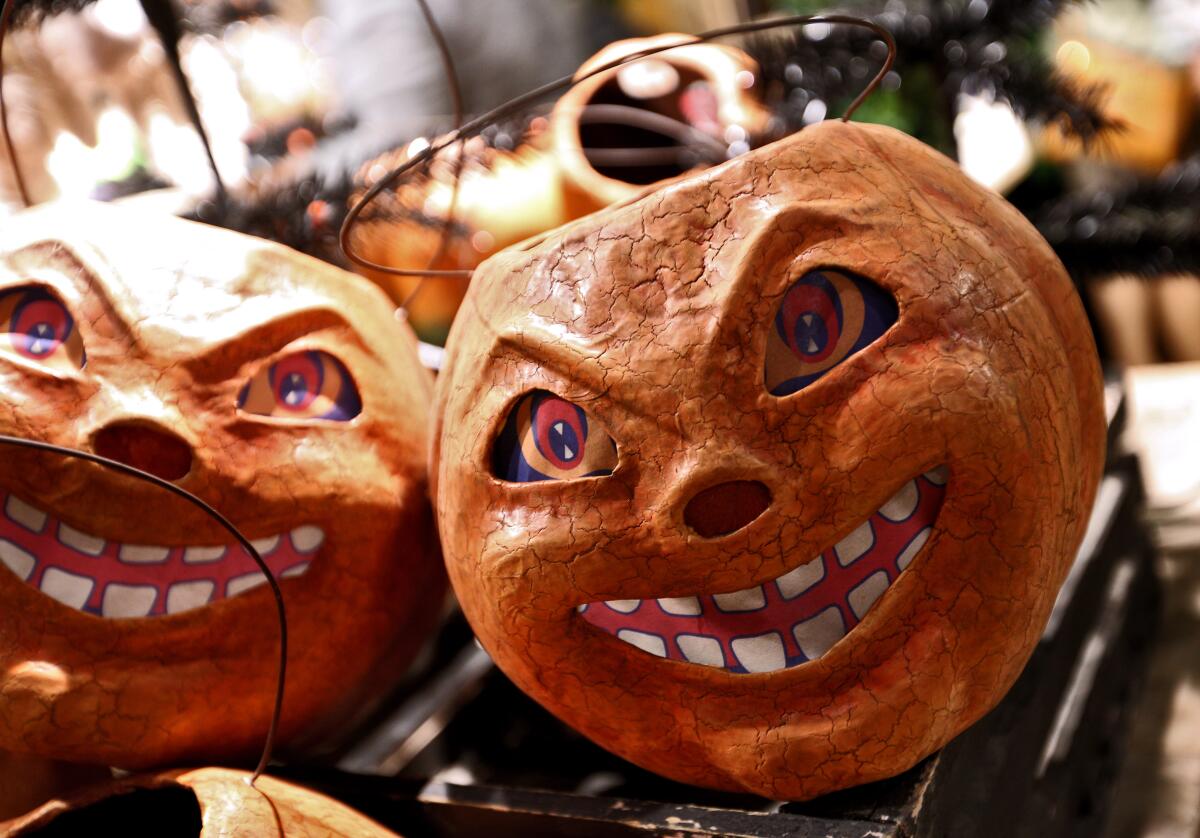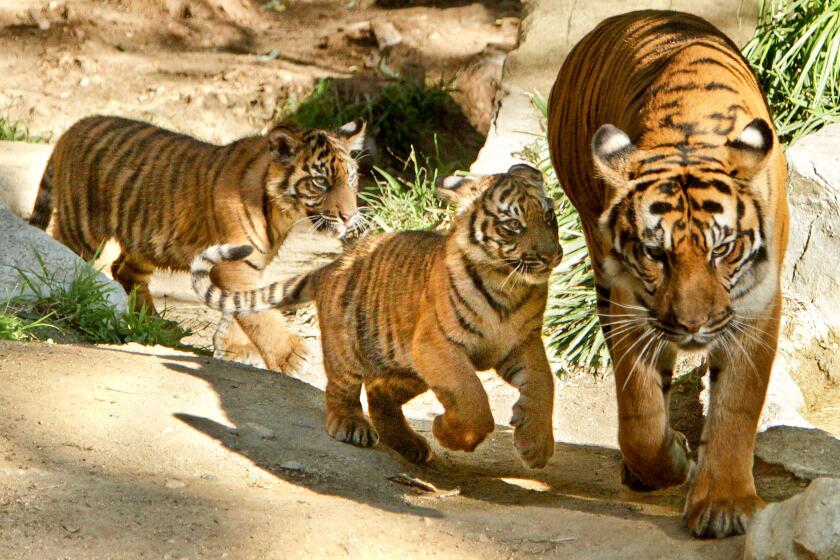Apodaca: The holiday season starts with a weird one

- Share via
It’s that time of year again. Time for pumpkin spice everything, and cozy flannel and fleece lining store shelves while it’s still 80 degrees in Orange County, marking the kickoff of what we blandly refer to as “the holiday season” with the weirdest holiday of all.
Don’t get me wrong — I love Halloween. It’s all about goofy fun that’s best not taken too seriously. But it really is weird, and not just because of the ghouls and goblins or the often overlooked fact that, next to Christmas, Halloween is our most commercially profitable holiday.
The strangeness lies in the fact that this holiday, more than any other, reflects and reduces to caricature — sometimes in unsettling ways — what’s happening in our world at the moment.
It’s worth noting that Halloween is technically not a holiday. It has no official recognition as such, and there’s no paid day off mandated. It’s more of a celebration that we choose to think of as a holiday, and it’s so deeply ingrained in our culture that the distinction holds little relevance.
It should also be acknowledged that all holidays evolve over time. The ways we celebrate them are influenced by, and are strong indicators of, the prevailing social and political climate.
But that reality is never more blatant — more superego barely keeping that id in check — than with Halloween.
First, a little refresher on Halloween history.
With all the advice and nicknames for child-rearing, the way we think about parenting has gotten out of whack, writes Daily Pilot columnist Patrice Apodaca.
As with many traditions, it borrows heavily from ancient pagan rituals, notably the Celtic festival of Samhain, which commemorated the coming of winter and, it was believed, marked a time when the dead could return and walk among the living. During Samhain, people would light bonfires, gather for feasts and wear costumes that were intended to ward off unfriendly spirits.
In the 8th century, Pope Gregory III designated Nov. 1 as All Saints Day, and the night before became known as All Hallows’ Eve, which folded in some of the Samhain traditions. Over the centuries it incorporated other influences, from the Gunpowder Plot in 17th-century Britain (tangentially associated with masked children going door to door begging for treats) to the Irish potato famine of the 19th century (Irish immigrants brought their custom of carving faces in turnips to America).
It’s fair to say that Halloween, from jack-o’-lanterns to trick-or-treating, is a modernized amalgamation of practices with historical roots. Yet it’s also all about who we are now.
In our version of Halloween, we give highest priority to costumes, which provide a palpable barometer of public interest at any point in time.
A decade ago, for instance, one of the most popular Halloween costumes was of the performer Psy, he of the hit song, “Gangnam Style,” which introduced a slice of Korean culture to the rest of the world. Ten years earlier we were at the height of the “Harry Potter” phenomenon, and wizard robes were everywhere. The first Halloween after the release of “Frozen” saw legions of little girls dressed as characters from the hit animated film who learned about female empowerment from the song “Let It Go.”
Even the old chestnuts — the witches, ghosts, vampires and such — tend to present in ways that offer a snapshot in time. This year, for instance, we’ll likely see witch costumes based on characters from the new “Hocus Pocus 2” film, or on Wanda Maximoff from the Marvel superhero movies and TV shows.
Adult costumes sometimes are clever references to politics and pop culture. But they also often reveal cringeworthy aspects of our society — witness the ubiquitous “sexy” costume trend.
It’s odd enough to dress up as a Playboy bunny — so much for female empowerment — but the use of everyday occupations such as nurses, cops, maids, plumbers and teachers as inspiration for trashy get-ups has taken this predilection to another level. Sure, some of these costumes are trying for humor, but after the abuse scandals within the Catholic Church, I don’t think that sexy nun and priest costumes are getting the same laughs.
And those aren’t even the weirdest. In case you missed it, one of the most heavily promoted costumes last Halloween was the Sexy Bernie Sanders. I’m not kidding.
Of course, Halloween is also about scares — and not just the pretend kind. Since 2020, COVID-19 has put a damper on Halloween celebrations, and we’re still recovering. Among other measures, we’ve had a serious rethink about the wisdom of letting kids knock on doors and shove their hands into communal candy bowls.
This year will likely see a loosening of many COVID precautions, and I’ve noticed a palpable relief at the prospect of a bit more fun after some hard times. But now another worry has surfaced. Alarmed by media reports, some parents are concerned that Rainbow fentanyl — bright, multicolored pills containing the dangerous synthetic opioid — will be slipped in with Halloween candy.
While cautiousness is understandable, parents should also be aware that similar fears in years past — from razor blades in apples to poisoned candy bars — have had little, if any, basis in reality. Sadly, such scare-mongering is just as ingrained in our modern Halloween myth as demons and ghosts.
Love Halloween or not — and I think most of us do — it’s all part of the weirdness that absorbs us before we move on to the other spirits of the season, those of gratitude, love and charity.
All the latest on Orange County from Orange County.
Get our free TimesOC newsletter.
You may occasionally receive promotional content from the Daily Pilot.





